The North
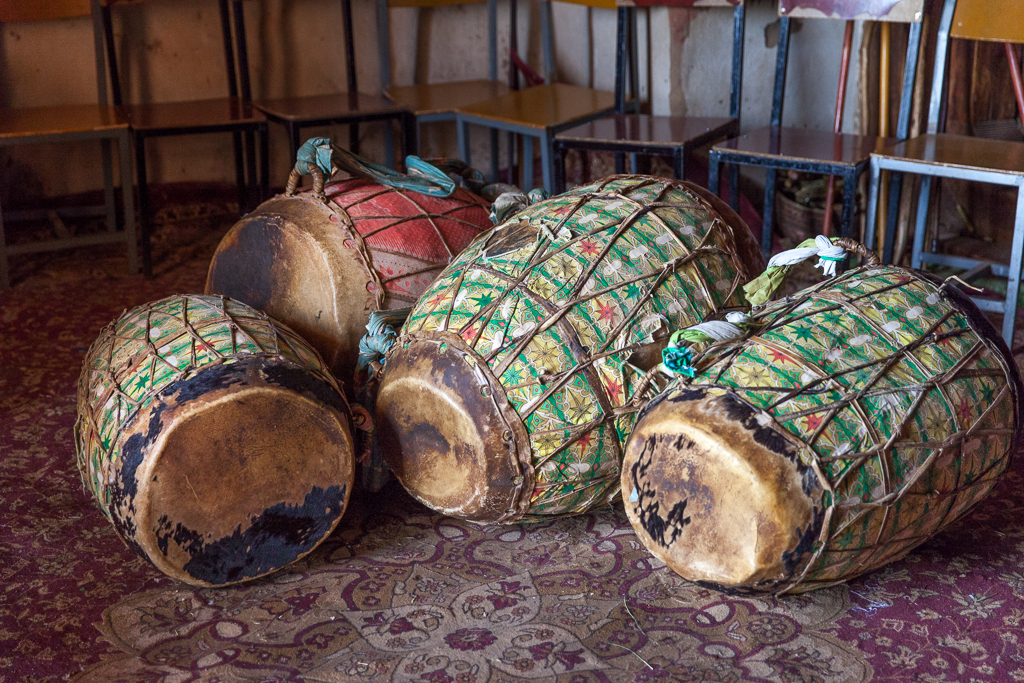
Empty
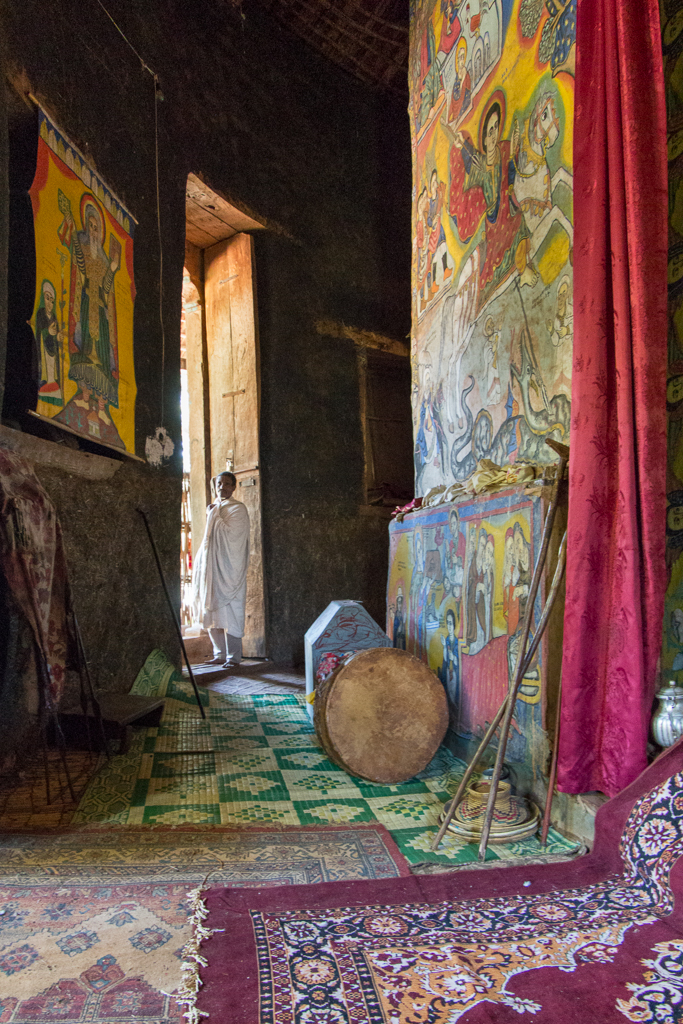
Gondar
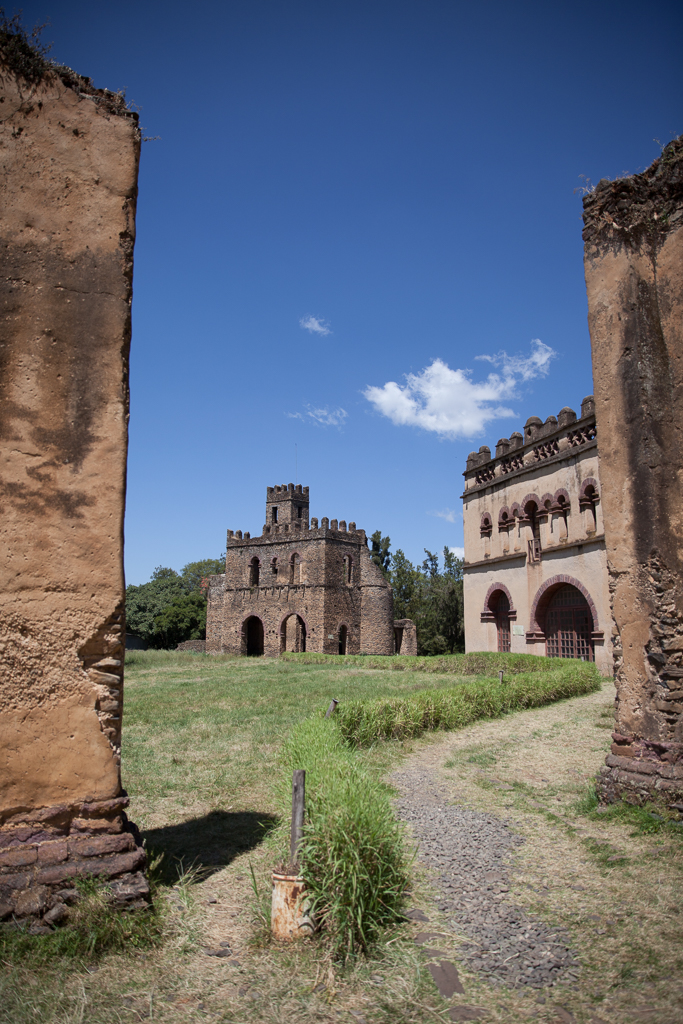
We set off early for the fortress and castles of Gondor, another amazing historical gem. En route we pass through a town the boys tell us famous for its yogurt and stop for breakfast. We must try this. The yogurt is unflavoured, thick and sour and served with a generous sprinkling of chilli powder. The boys eat with relish but we put it down to another slightly weird Ethiopian culinary experience not to be repeated! We continued on through Felasha. The Felasha are Ethiopian Jews and when Israel was proclaimed they encouraged this sect to move to Israel, indeed large numbers were airlifted out by the Israeli government. It is said they are discriminated against in Israel and treated as a lower class so I am not sure they got a good deal. We had coffee with the few remaining stragglers.
Finally we reach Gondar. The new town is dominated by a statue of Theodorus. He came to power in the 19 th century and united large parts of Ethiopia. He is depicted as a Robin Hood type character. His life was mainly spent on campaign.
In 1868 he wrote to queen Victoria to help him against the Turks. The reply arrived only 2 years later and this so incensed him that he imprisoned British citizens in retaliation. The British sent a force to free them and Theodorus was defeated and committed suicide.
Gondar is the site of an interesting ruined city dating back to the 17 th Century. Before that time the royal courts would move around but had no fixed abode but in the early 17 th century they settled in Gondar which then became the capital and an important cultural centre for over 2 centuries. Many rulers built their own castles and this has led to a compound of multiple ruined but impressive dwellings including lion enclosures The emperors of Ethiopia have always kept lions as a symbol of power going back to the time of King David. This was interestingly one of the facts which led to the downfall of Haile Selassie as he kept lions in this tradition but it was a press picture of his lions being fed meat during a particularly bad famine in the country during the 1970's that contributed
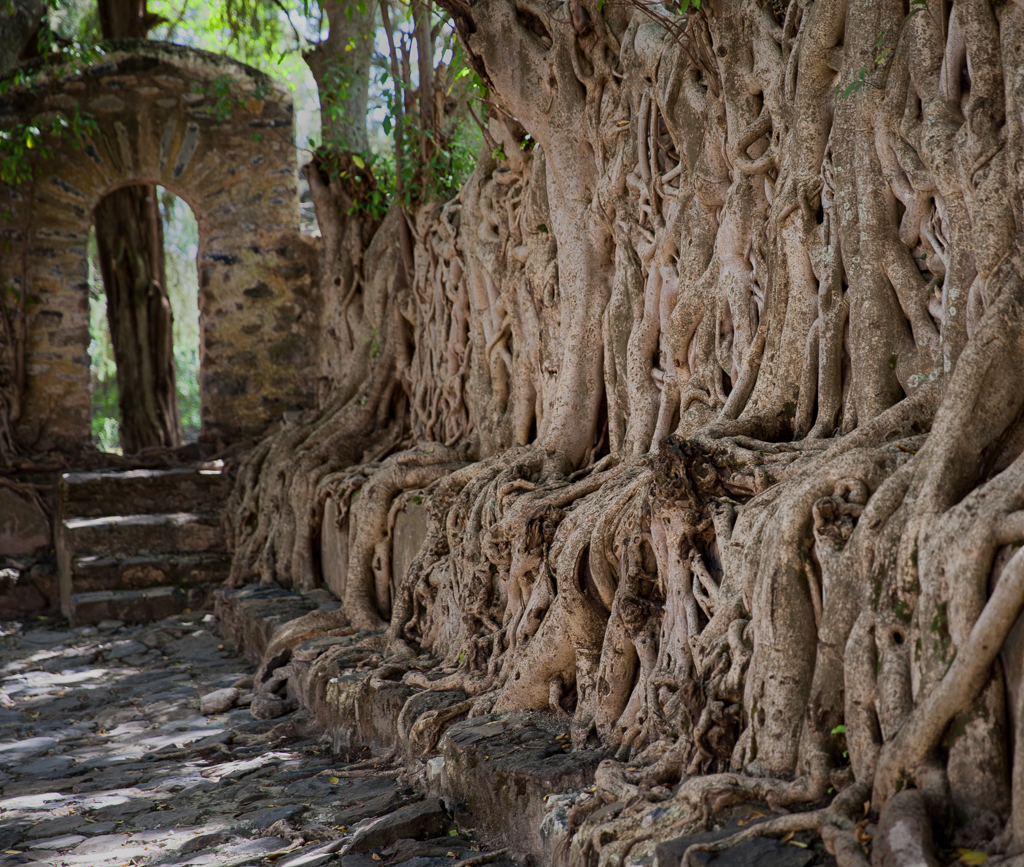
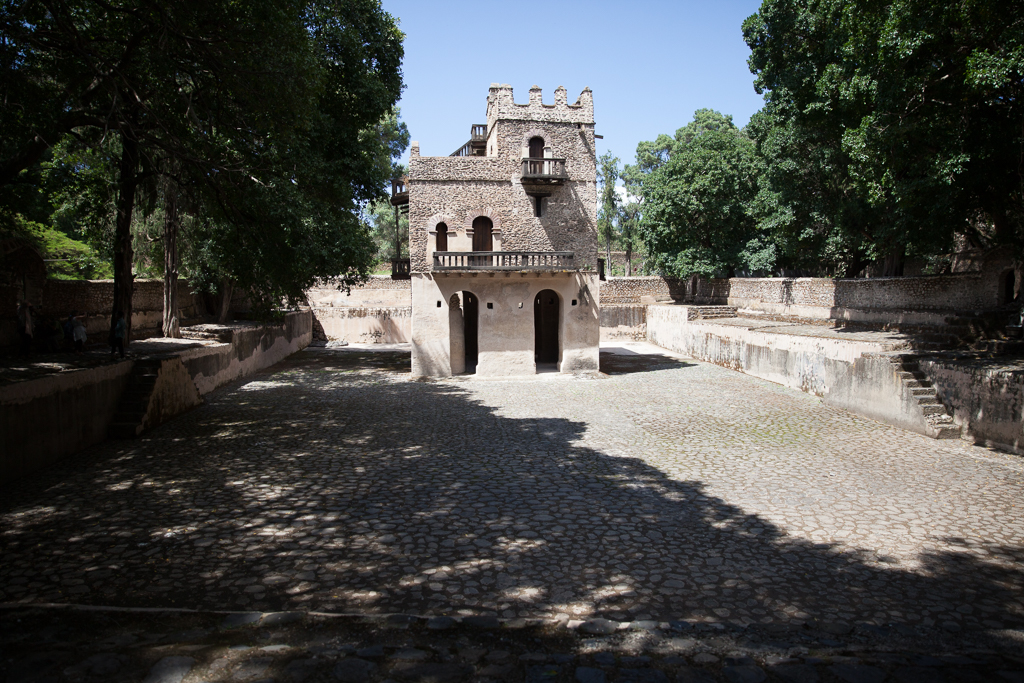
Anyway it seems that the time of Gondar was a period of rich history, intrigue and murder. Some emperors lived only for days after they were proclaimed, usually murdered by the next in line. The successive emperors were patrons of the arts, building dance halls, libraries, stables and baths, there is even a sauna. The last ruler of Gondor was an empress. Her castle is one of the most complete in the complex. Bruce, in his travels to Ethiopia, met with her and was impressed by her beauty. Gondar fell into decline and was subsequently sacked and destroyed by a series of Muslim invaders and, as the Italians used it as a military base, was bombed by the British in the Second World War.
The compound itself is on a hill with views of the surrounding plains, presumably a good tactical advantage. The ruined buildings are surrounded by grassy lawns and winding paths through crumbling arches and overgrown gardens offering scenic photographic opportunities.
Outside the compound, on the other side of the new town is the great baths built by the Felassie. They are a very impressive feat of engineering with sluice gates connecting the baths to the river allowing them to be filled and emptied. The baths are over 50 m long in a walled enclosure with fig trees entangled in the brickwork. They used to be used after horse races through the town. Now they are filled only once a year at the Festival of Timkat on Jan 17 th when the water is blessed and people come in their thousands in their white robes to bathe and be baptised in celebration of the baptism at the river Jordan. A great place for courting we are told! If the boy sees a girl he likes he will throw her a lemon. If she likes him she will use it to bathe.
Monastries Of Lake Tana
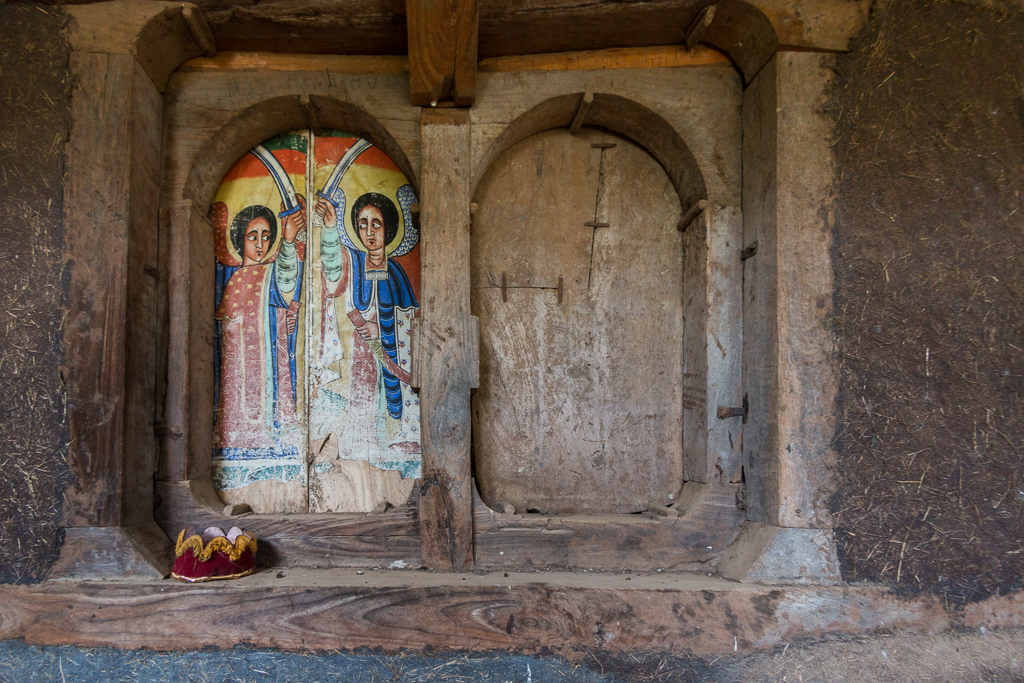
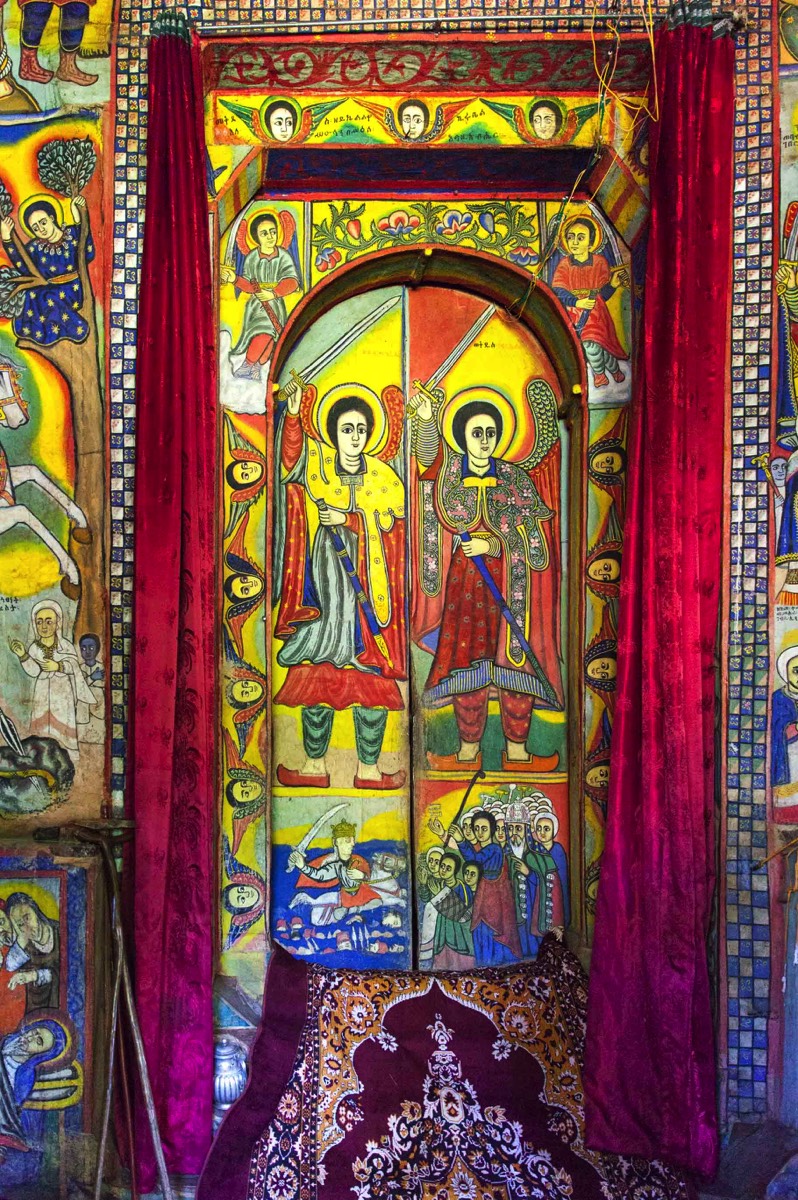
Lake Tana is in the northwest highlands , the largest lake in Ethiopia at 84 km long and 66 km wide and 15 m deep. It is famous for the many monasteries on small islands across the lake and for being the origin of the Blue Nile. There are still many active monasteries on the lake today, built on ancient sites and the repositories of many of the treasures of the Ethiopian church. Fish from the Nile basin are found in the lake as well as many water birds including pelicans , flamingo and fish eagles. Fishing is an important industry here and many small papyrus canoes or tankwa can be seen plying their trade. They look unstable and insubstantial so I hope the crocs are small and friendly.
We stay at a small hotel on the edge of the lake with lush, if rather untended, gardens and lots of birds in the trees. The black winged love bird, Abyssinian wood hoopoe and white cheeked turaco to name but a few. At supper that night wine is on the menu and, overcome with excitement at the opportunity, we indulge in a bottle of Boschendaal white. What a pleasure, at least until the bill for $60.00 arrived.
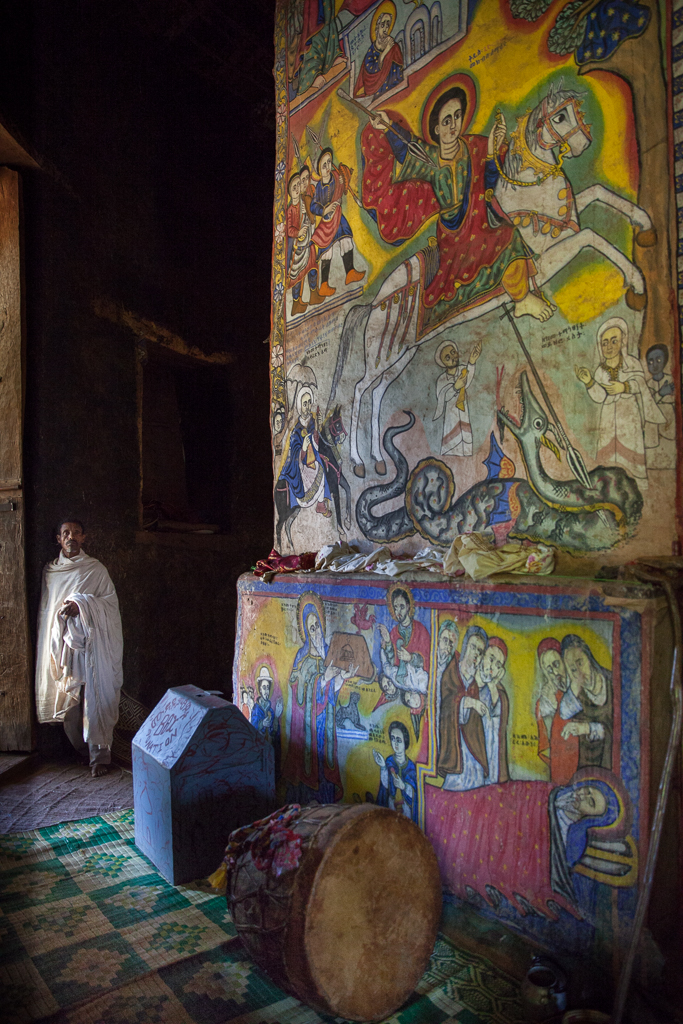
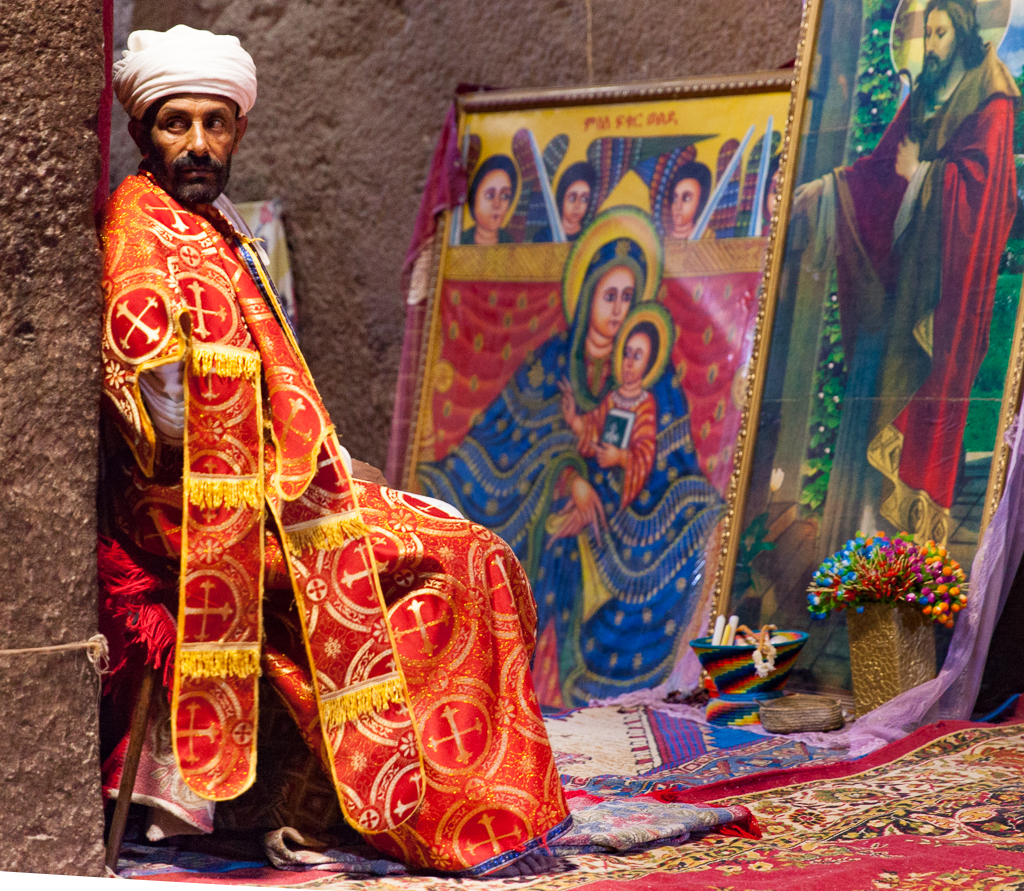
We organised a boat to visit some of the monasteries and the next morning we set off for the Zege peninsular and Bête Maryam Monastery. We pass many islands on the way some no bigger than a rocky outcrop. Many have monasteries nestled in the bush with round green roofs peeping through the foliage. We disembark at a rickety jetty and wend our way through a forested path past wild coffee and hops. The monastery is set in a clearing. The building is set out in concentric circles built around the holy of holies. There are three doors, one for men, one for women and one for the clergy, all 3 meters high. At the gate a wizened monk in bright saffron robes obligingly poses for photographs for photobirr. Inside the walls are covered in colourful murals of biblical stories and legends. This is how the Bible was , and is, taught to illiterate parishioners. George slaying the dragon is a prominent theme. A priest in white robes glides past dodging the shutter
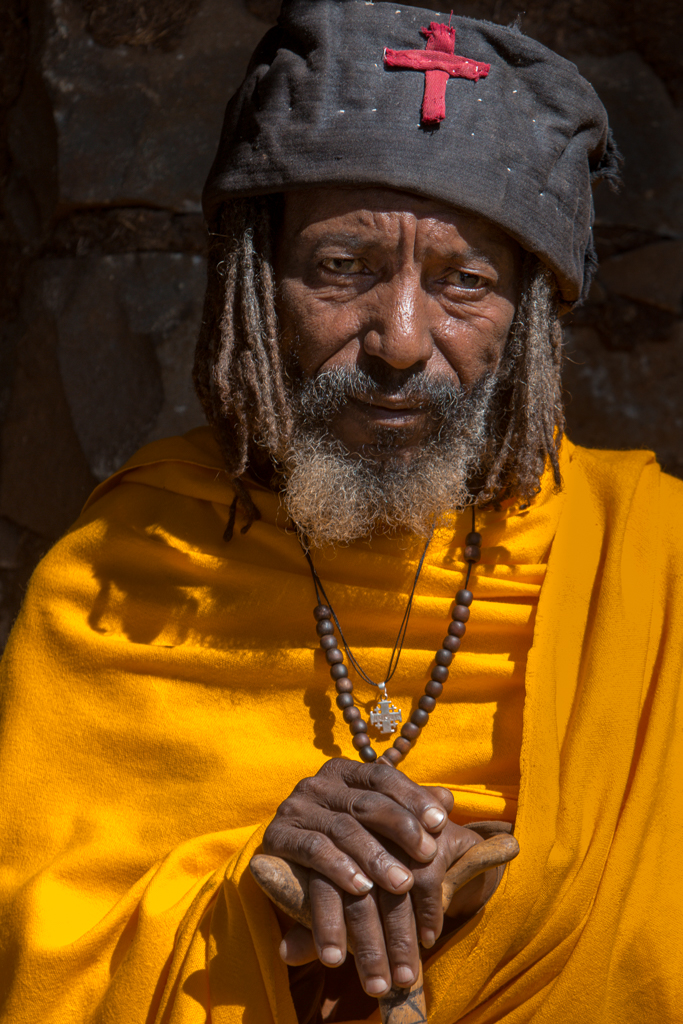
Lake Tana

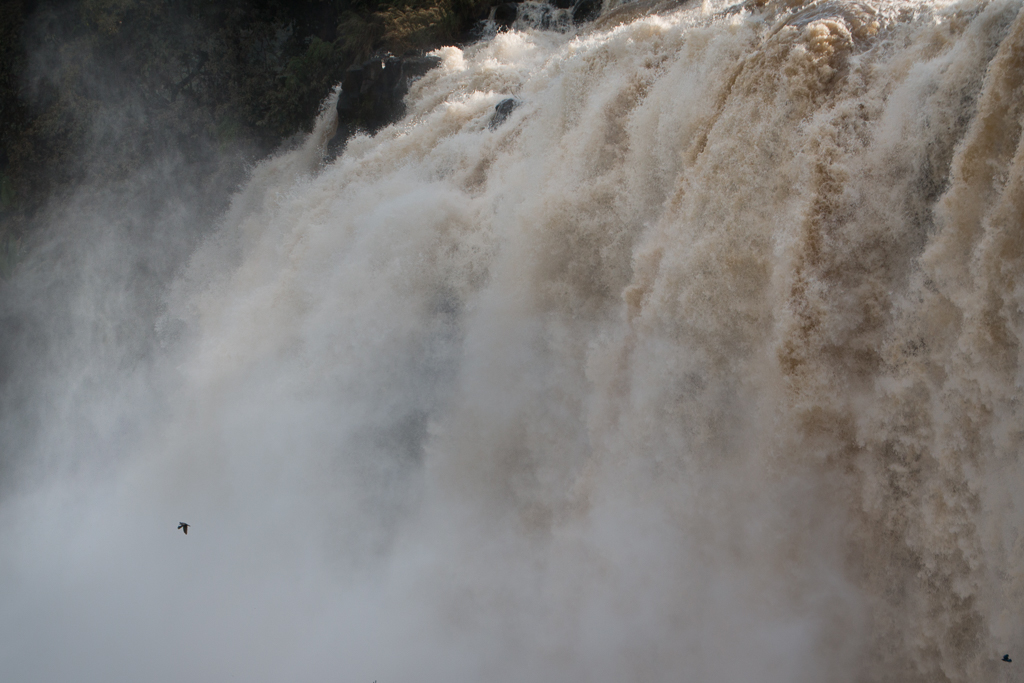
In the afternoon we leave for the source of the Blue Nile. In town we encounter a wedding where the bride and groom are traveling in the back of a car with the doors open. Everyone hoots and claps and the traffic comes to a standstill as they make several laps of the roundabout. I think they should close the doors before they get knocked off! A 40 minute drive to a small colourful village and then a boulder strewn track. A small ferry takes us over the river and we meander between maize and cane and khat until we reach an open area on the top of a small cliff. A group of boys are playing football. This is the origin of the Blue Nile, a spot of legends and myths. It is the holiest of holy places in Ethiopian Christianity as this is where Adam and Eve frolicked before the fall from grace. A modest waterfall ends in spray and mist. the local name is Gish Abay and the water is considered holy with healing properties up to 70 generations.
The water volume is significantly reduced by a neighbouring hydroelectric plant which diverts up to 4/5 of the water. The sun is getting low and the light badly positioned but we manage some shots over the top of the falls, angled down, before starting back down the track.
On the walk home there is a young girl with a crucifix tattooed on her forehead. This is not an uncommon Coptic practice. In the 13 th century newborns were branded with crosses. In the 19 th century ,during conflict with the Muslims ,King Johannes had the Christians tattoo crosses on their foreheads to distinguish them from Muslims when the the soldiers were carrying out raids and purges. Christian -Muslim conflict has been a recurring refrain in Ethiopian history with loss of
Awra Amba
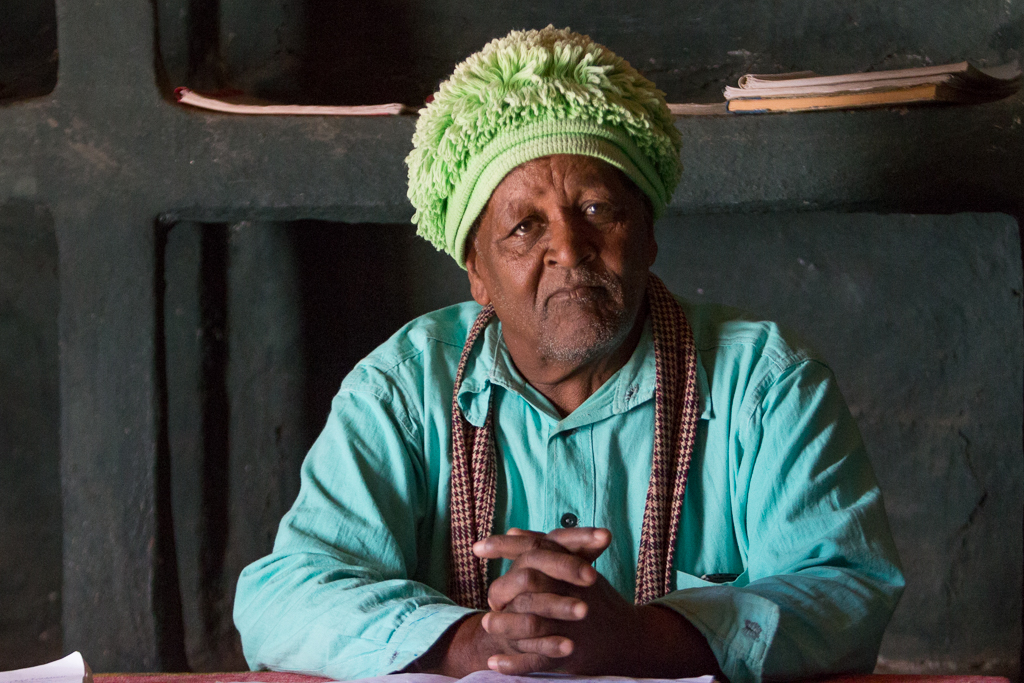
Zumba Nuru, a man before his time
We are heading to one of the most iconic destinations in Ethiopia, Lalibela and the sunken churches. It is a long drive and late morning we roll into the Awra Amba Ambassador village for a visit. We were delivered here by our drivers and had no real concept what we were brought to visit but it turns out to be very unique. This is a model village I guess you could say and a true commune in every sense of the word. It was founded in 1976 by Zumra Nuru. He was born a Muslim but from an early age questioned the social norms of his community, especially the way women and the elderly and disabled were treated. He felt that this was unfair . He could not understand why he was not allowed to eat with his Christian friends. Or why, after a day in the fields working side by side, his parents would return home and his mother would then serve his father and family., thereby doing double work. He developed a set of principals he felt should be central to peaceful and cordial society. These included sexual equality, respecting children's rights, helping people who are elderly or disabled or in need, avoiding bad speech and bad deeds, essentially do unto others as you would have done unto you, and lastly regarding all human beings as brothers and sisters regardless of race colour, class or religion. He was born Muslim but his religious position now seems non denominational. The village believes in 1 creator and therefore see no difference in their religion from any other monotheistic religion where there is a similar concept be it Judaism Islam or Christianity.
Overall the village was clean and neat and everyone looked very relaxed and industrious. The children were well behaved and playing happily. No one asked for money or gifts and the quality of the cloth was so good we all bought tons!
Although Zumba Nuru looked comical when he greeted us with droopy eyes, a round benevolent face and wearing what looked like a green tea cosy on his head, he had a big heart and a strong and selfless soul. It felt a bit like meeting Mother Theresa or Madiba. A man before his time. Perhaps a man before any time. A thought provoking visit.
It seems his ideas were not readily received in his community. He was treated as mentally ill by his family. He left home traveling to find like minded people to no avail and only in 1976 did he find people who agreed with him and set up a community. The community was persecuted and their land taken and they lived in exile for some years, foraging in the forests, but eventually under the new government they were given a small amount of land and set up a village. They did not have enough land to farm and started handicrafts to bring in extra money and now they are known for their weaving. The members of the community work towards the community benefit according to their abilities. They have one day a week when all work for the community fund which is used for helping those in need. They have a kindergarten and schooling is strongly encouraged. There is a home for elderly or disabled and a small sick bay and they have big sheds where they work the weaving looms and spin thread. Each family has their own home and kitchen house.